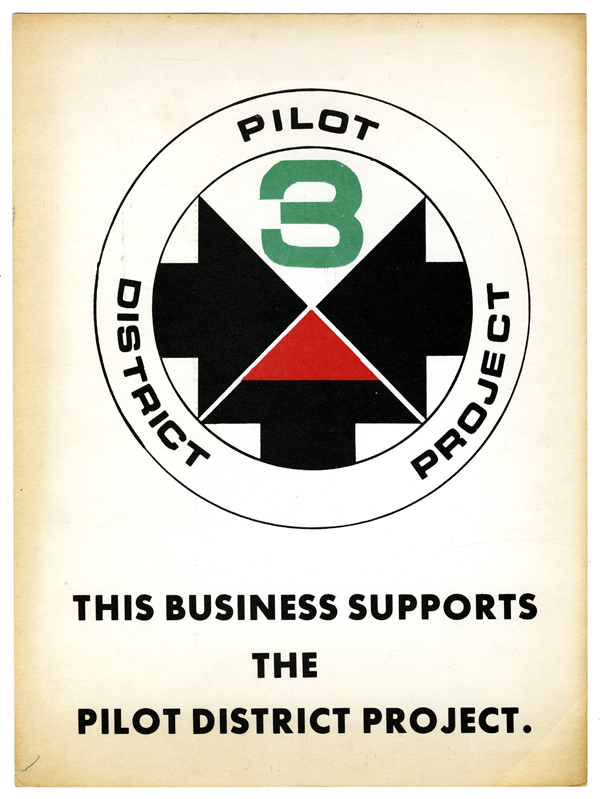
Amber N. Wiley, Ph.D., is an assistant professor of American Studies and associate director of the Intergroup Relations program at Skidmore College. Her research is centered on the social aspects of design—architecture as a literal and figurative structure of power.
She focuses on the ways local and national bodies have made the claim for the dominating narrative and collective memory of cities through design.
Wiley collaborated with the Museum to lend insight into the Pilot District Project (PDP), the subject of the forthcoming exhibition Community Policing in the Nation’s Capital Program: The Pilot District Project, 1968–1973.
NBM Online: After Rev. Dr. Martin Luther King Jr.’s assassination in 1968, the Pilot District Project was born as a local experiment in police reform and citizen participation in a predominantly African American area of Washington, D.C. Who were some of the key people instrumental to the PDP’s forming?
Amber Wiley: Robert Shellow, a social psychologist who was the head of research for the Kerner Commission, developed the program. He had previous experience researching issues of civil disturbances, as well as working with the Prince George’s County Police Department to aid in developing protocol for policing large-scale events.
Marion Barry, civil rights activist, founder of Pride, Inc., and the Free DC Movement, was initially against the program. His antagonism was a result of the fact that the PDP had started police sensitivity training before developing an elected citizens’ board to oversee the project. He created a coalition of local activists to run for the board under the banner of the People’s Party. His party ended up winning the majority of the seats on the PDP citizens’ board.
NBM Online: Who do you find to be the most interesting person connected to the PDP?
Amber Wiley: This is a terribly difficult question. I researched eleven individuals involved with the program, and they were all equally fascinating and impressive. I’ll draw a contrast between two individuals to give you an idea of the scope of the impact of some of the people involved with the PDP.
Erieka Bennett, who was a youth representative on the citizens’ board, currently serves as the head of mission of the Diaspora African Forum of the African Union and was inducted into the International Civil Rights Walk of Fame, alongside other well-known activists such as Earvin “Magic” Johnson, Ernest N. Morial, and C. T. Vivian. Susan Meehan, longtime ANC Commissioner in the District, was a young mother on the citizens’ board. Her name is well-known in Washington because her local activism has spanned five decades! Bennett and Meehan were the only two women I researched for the project, and their impact on the local and international levels has been tremendous and inspiring.
NBM Online: What were the main challenges the PDP faced?
Amber Wiley: Community buy-in was a major challenge. The question of what kind of input or influence the community would actually have came up repeatedly throughout the life of the program. Would there be “community control” or “community participation,” and what did each of those entail?
The PDP area was, and still is today, the most diverse in the city in terms of socioeconomic status—although this is changing—as well as race and ethnic diversity. So, creating some sort of consensus about what community policing would look like was also quite difficult.
Finally, funding was an issue. Money was spent on the program, but sometimes not in the most efficient ways—the production of the documentary film is a direct example of that. When the Office of Economic Opportunity funds dried up the programming did too, which is unfortunate because had the PDP been granted a longer run, it could have had a much bigger impact.
NBM Online: Was Washington, D.C.’s PDP the only project of its kind? Or were others around the nation created?
Amber Wiley: Community policing and community relations programs are enacted in almost every major city across the United States. Aspects of the PDP can be found in these programs: language training, sensitivity training, etc. At the time that the PDP was implemented, though, these were extremely novel and revolutionary ideas.
NBM Online: Fifty years later, what has been the impact of the Pilot District Project? Did it lay groundwork for other movements that can be recognized today? What insight has stood out to you in researching this piece of D.C. history?
Amber Wiley: If given the chance, Washington residents will rally to gain greater representation and involvement in how their city is run. Despite the short-lived nature of the program, coalition-building happened across various socioeconomic, religious, and ethnic demographic groups that never would have happened before, because these were people who cared about their city and its future.
